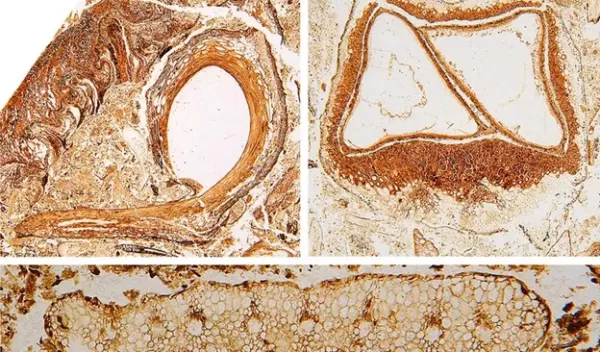
Dinosaur-age fossils provide new insights into origin of flowering plants
Flowering plants, or angiosperms, dominate most terrestrial ecosystems and are a major food source for humans. However, their origin has been a mystery since the earliest days of evolutionary thought.
Angiosperm flowers are diverse and contain unique structures not found in other land plants. The key to the discovery of the origin of flowers and how angiosperms might be related to other kinds of plants is to understand the evolution of the distinctive parts of the flower, especially the angiosperm seeds and the fruit in which the seeds develop.
Fossils with seed-bearing structures preserved in a newly discovered Early Cretaceous silicified peat provide a partial answer to the origin of flowering plants, according to findings of U.S. National Science Foundation-funded research published in Nature.
"These exquisitely preserved fossils have shed welcome light on the long-standing mystery of the origin of one of the key innovations that makes flowering plants so distinct from their closest living relatives," said Amanda Ingram, a program director in NSF's Division of Environmental Biology.
The fossils, which date from about 126 million years ago, support an earlier idea that the distinctive outer covering, the second integument, of developing seeds of flowering plants is fundamentally comparable to structures of certain extinct non-angiosperm seed plants from the "Age of Dinosaurs."
The seeds of cycads, ginkgo and conifers are enclosed and protected by a single integument, which is believed to correspond to the inner integument in flowering plants. However, the second integument is a unique outer structure whose development is linked to its curious recurved form and is controlled by different genes than those responsible for the development of the inner integument.
These fossils have two seeds enclosed inside a specialized recurved structure called a cupule.
Similar cupules occur in several groups of extinct plants from the Mesozoic era that are known only from fossils, and while it has been suggested that some of these cupules may be precursors of the second integument of flowering plants, discussions have been hampered by inadequate information, scientists said.
The newly discovered fossils, along with the reexamination of previously described fossils, suggest that the recurved cupules found in several groups of extinct seed plants from the Mesozoic era are all fundamentally similar and are likely the precursors of the second integument of flowering plants.


